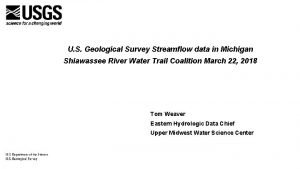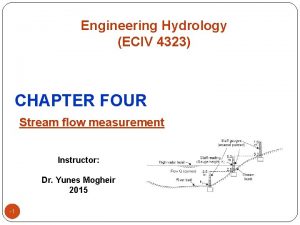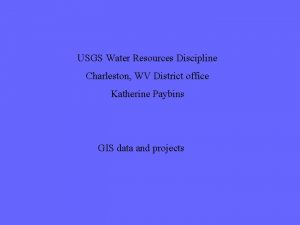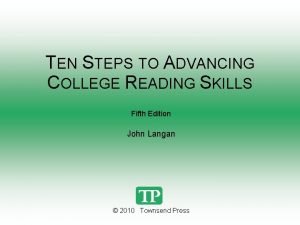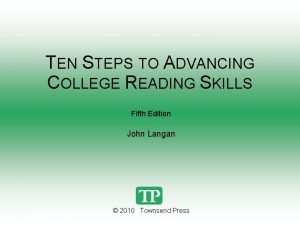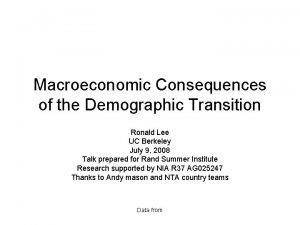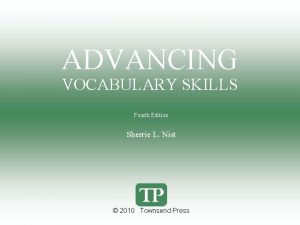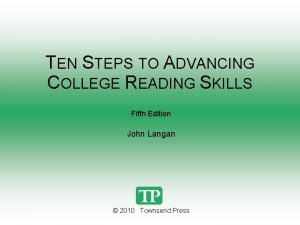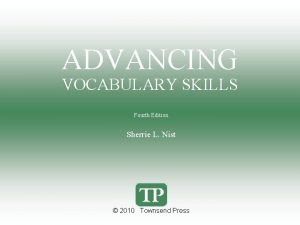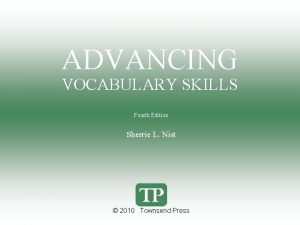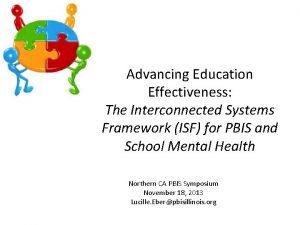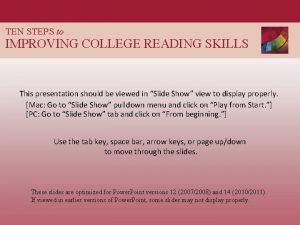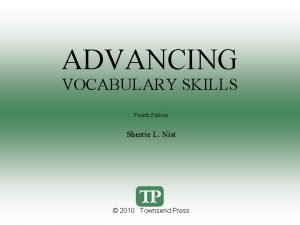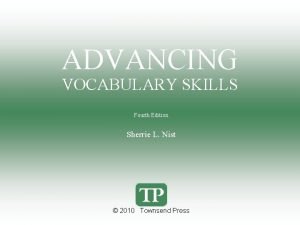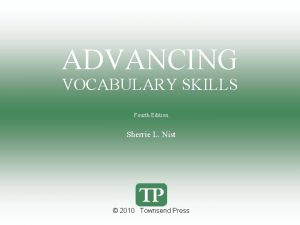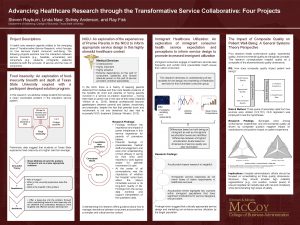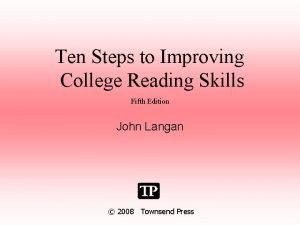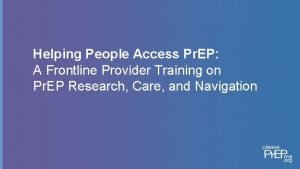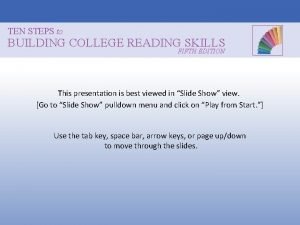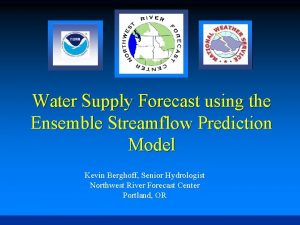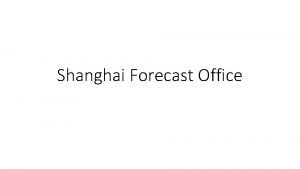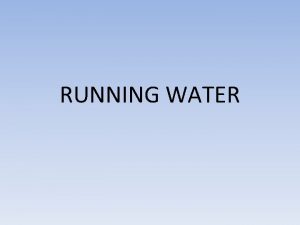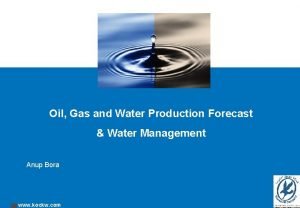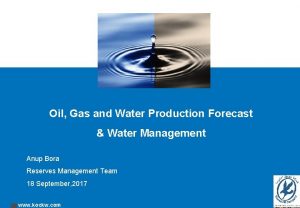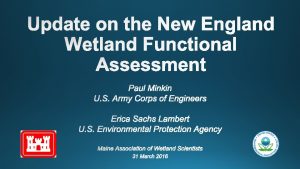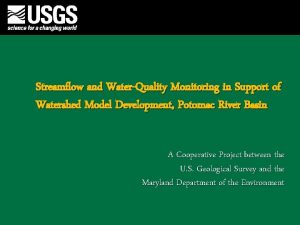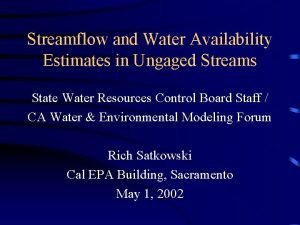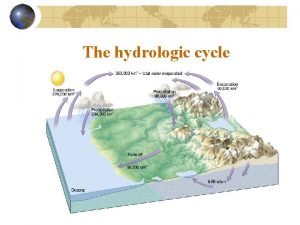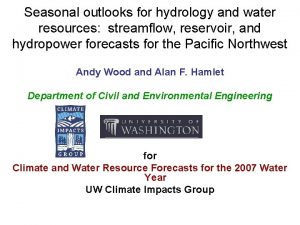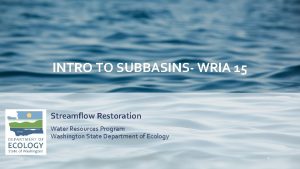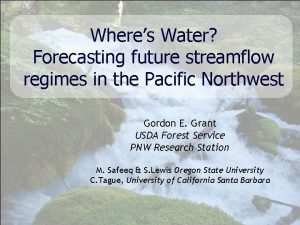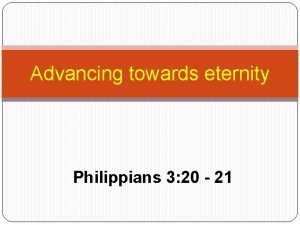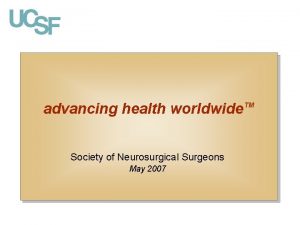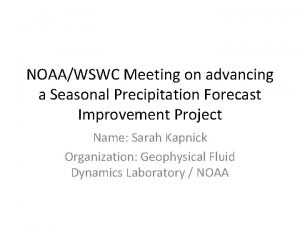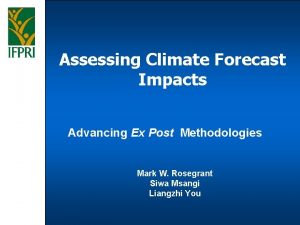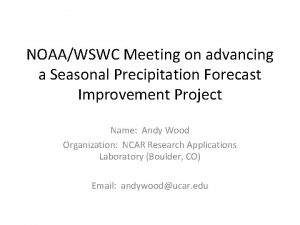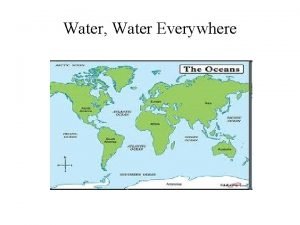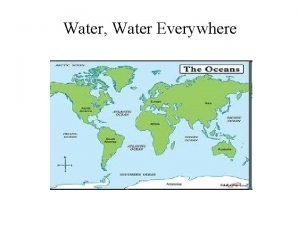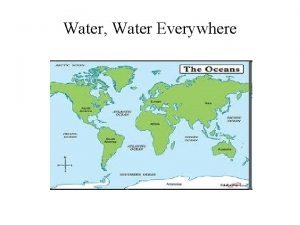Advancing streamflow forecast science to support water management




























- Slides: 28

Advancing streamflow forecast science to support water management Andy Wood NCAR Research Applications Laboratory Hydrometeorological Applications Program NCAR Networking Day Boulder, April 17, 2015 1

Acknowledgements & Website NCAR • Martyn Clark • Andy Newman University of Washington • Bart Nijssen Reclamation • Levi Brekke US Army Corps of Engineers • Jeff Arnold http: //www. ral. ucar. edu/projects/hap/flowpredict /

Themes • Motivation • An Evolution of Streamflow Forecasting Approaches • New Science Begets A New Challenge

Key reports 4

The Short Term user needs targeted forecasting Other Categories 5

Traditional Resources 1980 s construct: • parsimonious watershed models run on single PCs (or card decks + VAX) • phone/mail transmission of data, forecast output bulletins • manual synoptic weather analyses, rudimentary NWP grey = inactive

NWS River Forecast Process Weather and Climate Forecasts Hydrologic Model Analysis hydrologic expertise & judgment Forecast precip / temp model guidance River Forecast Modeling System Analysis & Quality Control Observed Data Outputs Graphics parameters Calibration River Forecasts Rules, values, other factors, politics Decisions

Runtime Modifications River Forecast Centers • • • MOD capability has been available in the NWS >30 years Generic MOD capability implemented within FEWS Extend capability to other users outside of OHDcore models Slide by H. Opitz, NWRFC Calibration Climatology CHPS Observed and Simulated not Tracking MOD Interface Result: Improved observed period simulation Hydrologist render a Run-Time modification to the SACSMA Model and increases the lower zone primary and supplemental states

Examples: Nooksack R Typical situation during snowmelt: the simulation goes awry q What can a hydrologist deduce from this simulation? q As it is, blending simulation and obs gives an ‘unrealistic’ forecast 9

Examples: Nooksack R One Solution -- double the snowpack (WECHNG modification) 10

Examples: Nooksack R The resulting simulation is better, hence the forecast is more confident q Flows stay elevated, have diurnal signal of continued melt. 11

Paradigm Limitations For major events • it is difficult to assess forecast system skill • influence of forecasters cannot be separated from influence of data, models methods • forecast service scales with FTEs, not computers For the development process • new science that requires reproducibility cannot be integrated • the value of science infusion is hard to quantify Gochis et al, BAMS, 2015

Forecasting resources have greatly expanded 1980 s construct: • parsimonious watershed models run on single PCs (or card decks + VAX) • phone/mail transmission of data, forecast output bulletins • manual synoptic weather analyses, rudimentary NWP Since then: • supercomputing, desktop clusters • web data services and connectivity • GIS • high-res satellite DEMs & land cover • real-time remote sensing • dozens of complex land surface schemes at fine scales • ESM at large scales • dozens of (better) NWP outputs & ensembles grey = inactive Since the late 1990 s, this cornucopia of new resources has been applied toward increasingly extensive hydrologic analyses at increasingly fine scales.

New resources create new capabilities A myriad of new ingredients exist for multi-scale hydrologic analysis (and forecasting) global meteorological and climate datasets, eg, precip timeseries & analyses (TMPA+GPCC) global, yet fine resolution land cover and terrain analyses for routing and hydraulic features (SRTM) eg. channel slope in Pakistan global hydrologic modeling simulation (VIC)

Enabling hydrologic analysis across scales ex. in Colombia flow, Mexico flow, S. America

User-oriented products can be derived … ex. in Colombia, fine scale national domain

Hydrologic Prediction Science now has a framework We are now automating, to the extent possible, what forecasters did before Workflow/Data Management Platform Historical Forcings Spinup Forcings (regional) parameter estimation au to Forecast and Hindcast Forcings Since 2004, HEPEX has highlighted progress in key methods to make new systems work well Hydro/Other Observations objective DA feedback into component improvements verification QC calibrated downscaling Appropriate Hydro/Other Models postprocessing, forecast calibration Streamflow & Other Outputs Products, Website hindcasting, ensembles (uncertainty), benchmarking, real-time operations http: //www. hepex. org/

Continental-domain fine-scale flood forecasting systems have arrived NCAR/Gochis Scottish Flood Forecasting Service EFAS NSSL

‘End Member’ Forecast System Approaches Operational, 1980 s => • Provide tailored, but limited (mostly deterministic) forecasts that are inputs to water management • Simple conceptual models that can be adjusted manually, in real-time • Heavy use of model calibration • Reliance on human expertise at the model/data system level. • Non-reproducible, non-scalable forecast process • Run on small number of workstations Research/experimental 2000 s => • Provide non-tailored, centrally produced forecasts, typically in form of percentile or frequency analyses • ‘Physically-based’ high-dimensional models • Little or no calibration • Automated forecast process, reproducible • Ensemble outputs desired, leverage supercomputing grid 2 grid

End Member Forecast System Philosophies Operational, 1980 s => • “The models, data and systems will always be inadequate, thus human expertise is needed to fix performance on the fly” • “If the decisions using your model outputs require a certain answer, the models must be simple so that they can be adjusted to provide that answer” Research/experimental 2000 s => • “The superior physics in new models and datasets will yield good quality results” • “Most problems can be fixed with higher resolution and even more detailed process representation” • “Research-grade results should be operationally useful” grid 2 grid

But are we moving too fast? Major cha • mean annual flow (what could possibly go wrong? )

Flow Forecasting Catch-22 There is a key tradeoff in forecast system design - as the model resolution (time/space) becomes finer, the uncertainty at the model scales increases … but the ability to characterize uncertainty falls high ability to assess uncertainty local uncertainty low system scale/complexity low complexity can run ensembles, calibrate, hindcast, post-process, run many thousands of variations high hyper complexity cannot calibrate, no ensembles, hindcasting, or full verification can only run tens of variations

Short Range Flow Forecasting Observations The ‘new forecasting’ in fact encounters many of the traditional paradigm challenges, e. g. , - uncertain initial conditions (watershed moisture and energy, amt & distribution - depends on quality of spinup forcing, the model, flow obs, regulation info - inconsistent real-time and retrospective forcings and analysis - uncertain future forcings (quality of met forecasts) NWRFC Mods for 1 Month MOD name aescchng chgblend ignorets mfc sacco ssarreg tschng Count 190 578 8 133 529 921 8554 tschng_MAP 2136 tschng_MAT uadj 461 7 total/watersh ed/day ~1. 25 Description Snow areal extent change Blend simulation with last observation Throw out timeseries input data Melt factor correction (change melt rate) Soil moisture content change Reservoir regulation change Alter a timeseries (ie, redraw a flow forecast or obs) Change precipitation forcings (obs, forecast) Change temperature forcings Change threshold for rain on snow to cause melt For ~360 watersheds, for ~30 days model issues parameter issues water regulation issues input data issues and so on…

Sophisticated systems are not immune to the same broad range of uncertainty system by Amy Sansone, Matt Wiley, 3 TIER

New Paradigm Limitations For major events • it is difficult to assess forecast system skill (also cannot be run for long enough to see track record) • the complex system may be off track for reasons that cannot be easily detected or corrected (science, data and technology gap) For the development process • options may now be limited due to computational requirements • a cumbersome system may make it hard to test new variations and infuse new science For extreme events, we likely still can’t diagnose forecast errors and describe forecast skill!

R 2 O/O 2 R – a trek requiring tradeoffs How can I carry my hyper-resolution ESM data across this valley? Still haven’t seen anything better over on that far side … why cross over? Research Operations Two water agencies (USACE and Reclamation) are supporting NCAR (A. Wood) to assess and demonstrate (in real time) the adequacy of new hydrologic prediction science for operational forecasting

R 2 O/O 2 R – elements of the path forward Research Operations • • Flexible, intermediate-complexity approaches are needed Resolution choices must support key methods in hydrological prediction science Development efforts must integrate people and knowledge from both R and O International communities of practice can provide insight on choices

Thank You andywood@ucar. edu 28
 Water and water and water water
Water and water and water water Michigan streamflow data
Michigan streamflow data Streamflow measurement by area velocity method
Streamflow measurement by area velocity method Usgs streamflow wv
Usgs streamflow wv My favorite subject is art
My favorite subject is art Ten steps to advancing college reading skills
Ten steps to advancing college reading skills Ten steps to advancing college reading skills
Ten steps to advancing college reading skills Ronald lee in advancing
Ronald lee in advancing Advancing vocabulary skills 4th edition answer key
Advancing vocabulary skills 4th edition answer key Ten steps to advancing college reading skills
Ten steps to advancing college reading skills Advancing colours
Advancing colours Advancing technology for humanity
Advancing technology for humanity Chapter 11 sentence check 1 clandestine
Chapter 11 sentence check 1 clandestine Advancing vocabulary skills 4th edition
Advancing vocabulary skills 4th edition Advancing education effectiveness
Advancing education effectiveness Ten steps to advancing college reading skills answers
Ten steps to advancing college reading skills answers Odontoclasia meaning
Odontoclasia meaning Advancing vocabulary skills 4th edition
Advancing vocabulary skills 4th edition Advancing vocabulary skills 4th edition
Advancing vocabulary skills 4th edition Rowing upstream meaning
Rowing upstream meaning Advancing technology for humanity
Advancing technology for humanity Objective of commercial bank
Objective of commercial bank Advancing vocabulary skills 4th edition
Advancing vocabulary skills 4th edition Advancing healthcare research
Advancing healthcare research 10 steps to improving college reading skills
10 steps to improving college reading skills Gilead advancing access
Gilead advancing access Ten steps to advanced reading
Ten steps to advanced reading Advancing people
Advancing people Ieee advancing technology for humanity
Ieee advancing technology for humanity

